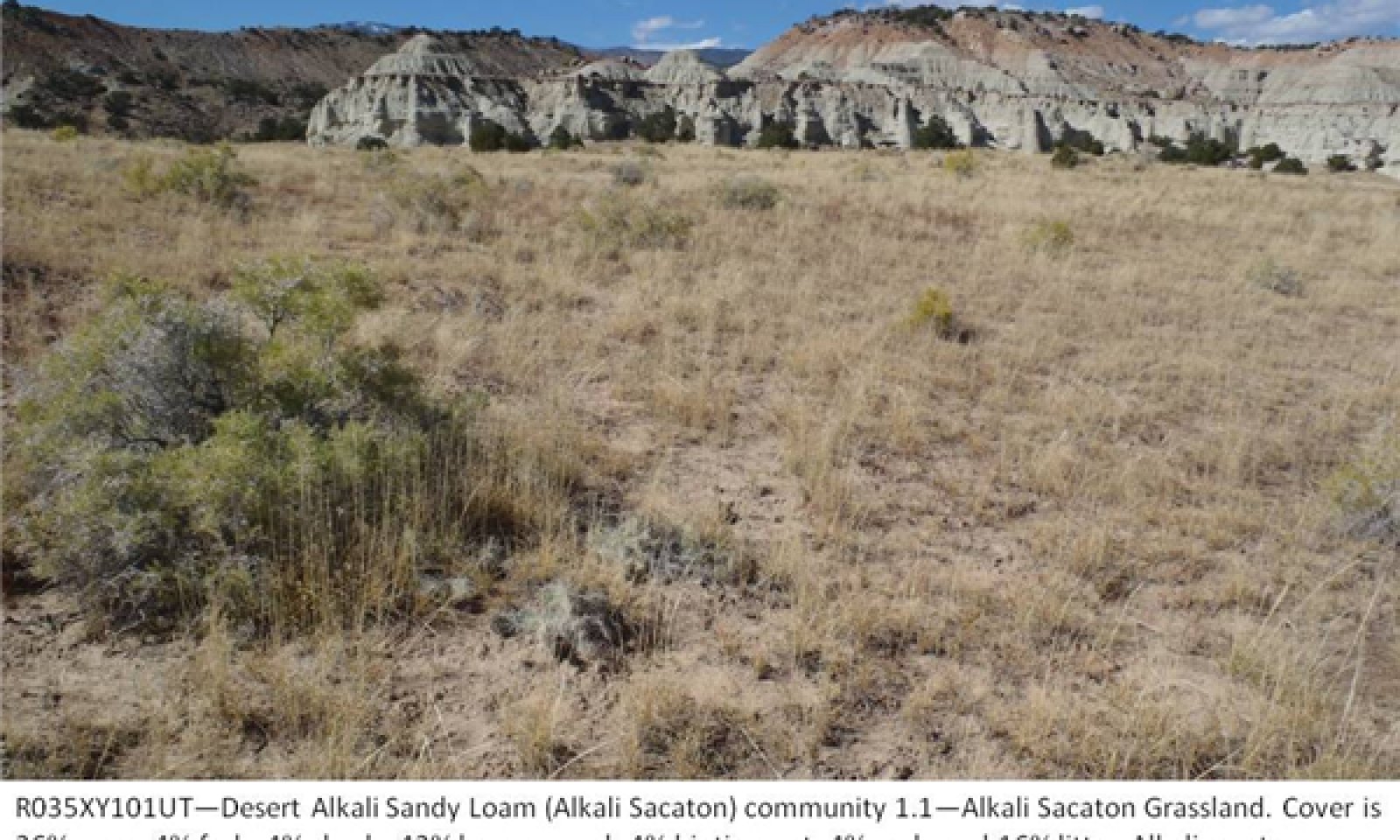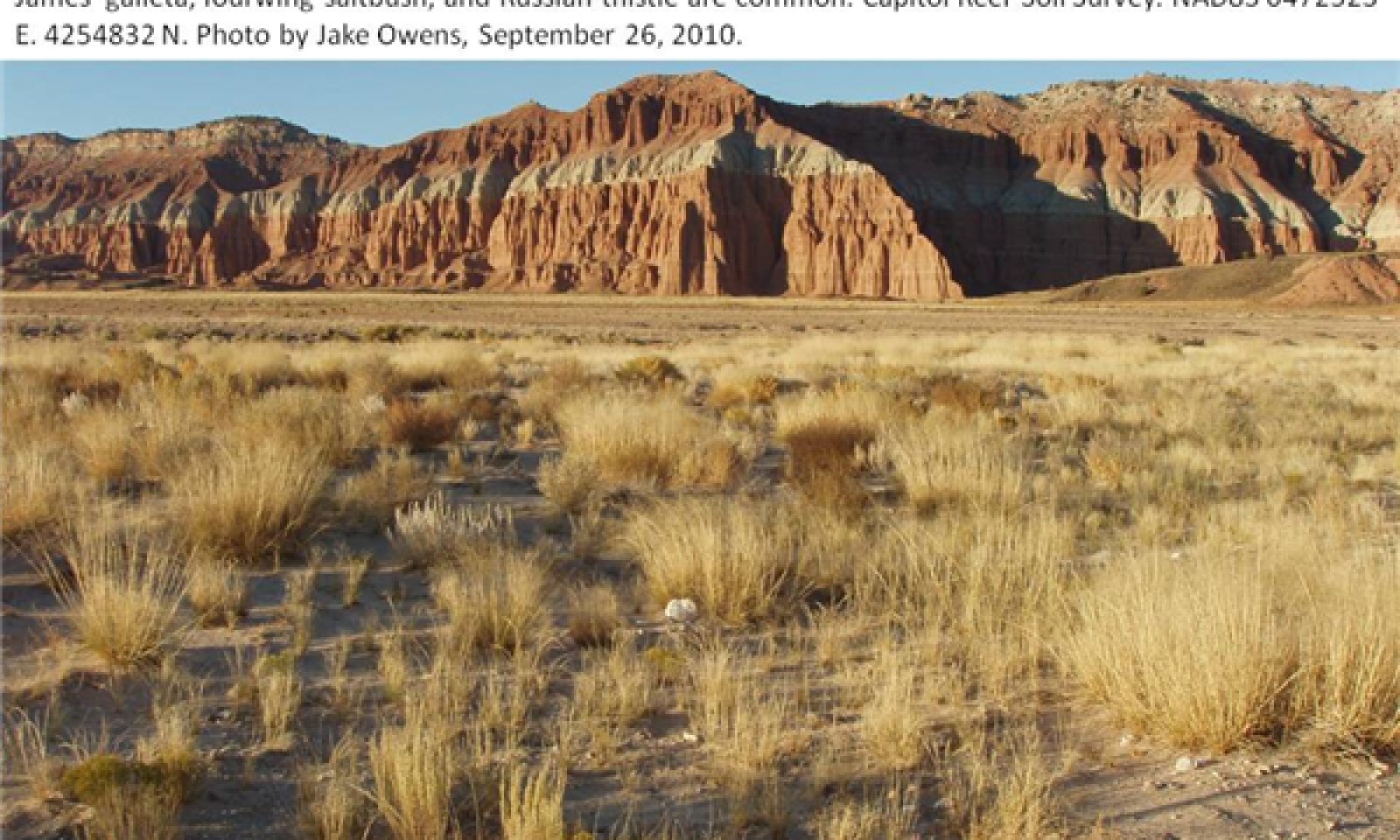
Desert Alkali Sandy Loam (Alkali Sacaton)
Scenario model
Current ecosystem state
Select a state
Management practices/drivers
Select a transition or restoration pathway
- Transition T1 More details
-
No transition or restoration pathway between the selected states has been described
Target ecosystem state
Select a state
Description
The reference state is dominated by alkali sacaton. Indian ricegrass and other perennial grasses can also be abundant in the plant community. Excessive soil movement by water can result in an increase in rubber rabbitbrush and/or greasewood, while extended periods of stable soil trend toward alkali sacaton without shrub co-dominance. The reference plant community rarely burned, and would not have changed significantly in community composition following fire due to the fire tolerance of all major species in the community. The reference state is susceptible to Russian thistle and halogeton establishment, which results in a transition to an invaded state that is not likely to return to reference due to the persistence of Russian thistle and halogeton in the plant community.
Submodel
Description
The invaded state is similar to the reference state in plant community structure and function, however the presencs of invasive species decreases the resistance and resillience of the site to further degradataion. Due to lack of highly disturbed areas, the community responses to major disturbances are not documented, and are not currently included in the state and transition model.
This state is generally dominated by alkali sacaton. The primary disturbance mechanism is excessive soil movement by water.
Submodel
Mechanism
This transition occurs with the establishment of non-native invasive species. Disturbances that promote this transition include season long continuous grazing of perennial grasses, prolonged drought, recreation or other surface disturbances. However, invasive species such as Russian thistle can invade intact perennial plant communities with little to no disturbance. Once invasive plants are found in the plant community, a return to the reference state is not likely.
Model keys
Briefcase
Add ecological sites and Major Land Resource Areas to your briefcase by clicking on the briefcase (![]() ) icon wherever it occurs. Drag and drop items to reorder. Cookies are used to store briefcase items between browsing sessions. Because of this, the number of items that can be added to your briefcase is limited, and briefcase items added on one device and browser cannot be accessed from another device or browser. Users who do not wish to place cookies on their devices should not use the briefcase tool. Briefcase cookies serve no other purpose than described here and are deleted whenever browsing history is cleared.
) icon wherever it occurs. Drag and drop items to reorder. Cookies are used to store briefcase items between browsing sessions. Because of this, the number of items that can be added to your briefcase is limited, and briefcase items added on one device and browser cannot be accessed from another device or browser. Users who do not wish to place cookies on their devices should not use the briefcase tool. Briefcase cookies serve no other purpose than described here and are deleted whenever browsing history is cleared.
Ecological sites
Major Land Resource Areas
The Ecosystem Dynamics Interpretive Tool is an information system framework developed by the USDA-ARS Jornada Experimental Range, USDA Natural Resources Conservation Service, and New Mexico State University.






